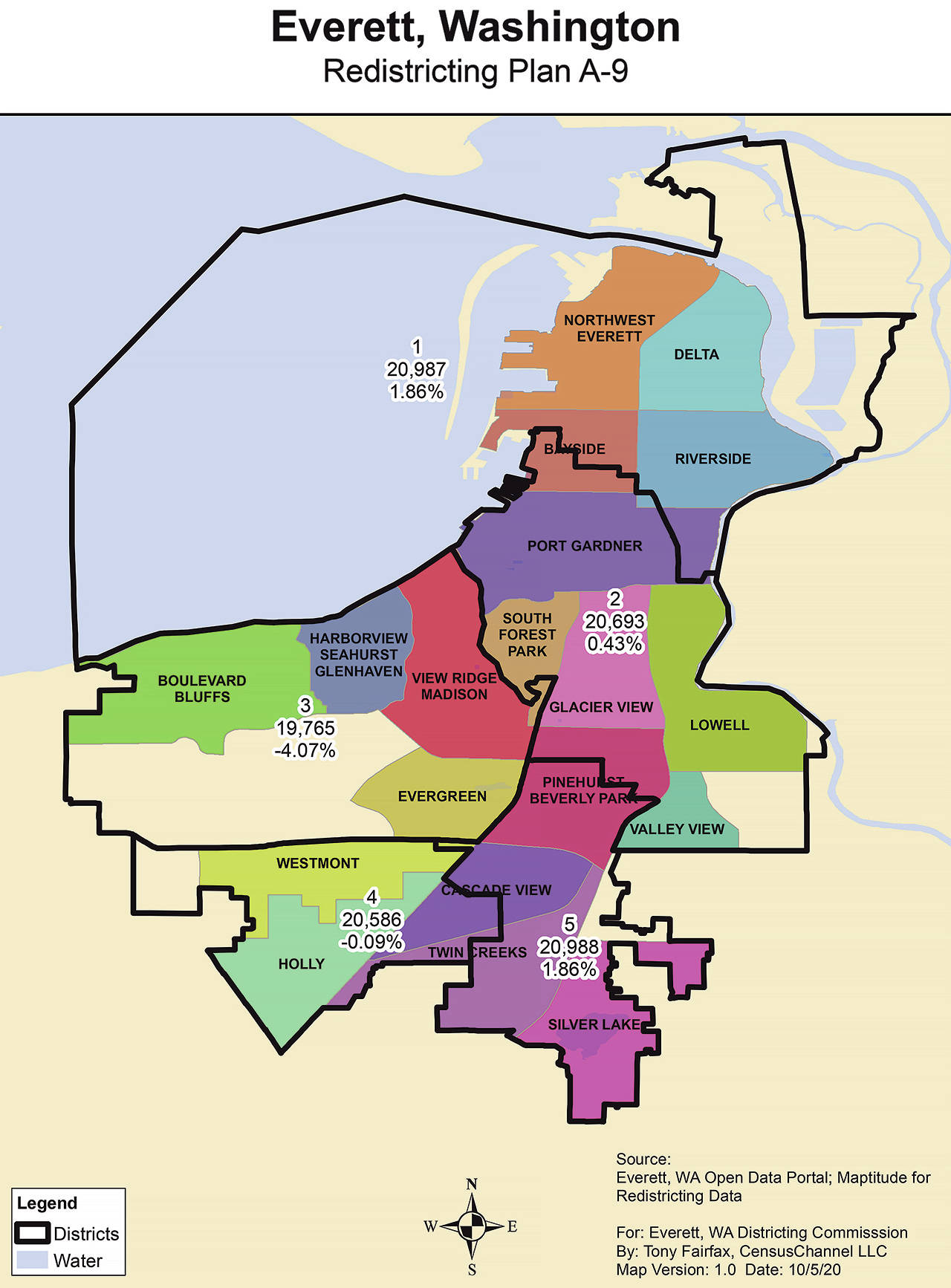EVERETT — The first year with City Council districts has brought a sea change.
Of the five Everett City Council positions up for election this year, three won’t have incumbent candidates. Longtime councilmen Scott Bader, Jeff Moore and Scott Murphy all bowed out of re-election campaigns this year, and two of them said districts were at least a factor in their decisions.
Their absences created opportunities for several first-time candidates. There are challengers for every district, including two primary elections. Those were goals for district supporters who started organizing almost five years ago, after several elections when an incumbent was the only name on the ballot.
“I think it’s going to bring new folks to the table and I think we’re already seeing that,” said Simone Tarver, who was appointed to the city’s districting commission and is an executive committee member of NAACP Snohomish County, which endorsed the change to districts. “One thing that is often brought up is different areas of our city have different needs.”
In 2018, Everett voters approved the switch to five City Council districts, plus two at-large positions. Before, all council members were elected at-large. All terms remained four years. Then it was up to a commission appointed by city elected officials to shape the districts, which it finalized at the end of 2020.
Each district has around 20,000 residents, roughly splitting the city’s population equally.
Tarver applied for appointment to the districting commission because she wanted to “put an equity lens” to the process and the outcome.
Supporters of City Council districts touted improved representation for areas south of 41st Street, colloquially considered the north-south dividing line.
With council members historically from the city’s north end, “it makes sense investment and attention” is there, she said. A lifelong Everett resident, Tarver saw districts as a way to get elected representatives who would know what life was like across the city.
That was part of the reason Everett City Councilwoman Brenda Stonecipher was an early supporter of the changeover.
“The base of the city council was really concentrated in an area that was not really representing everybody,” she said.
Stonecipher, now in her fourth term, liked the goal to make council elections more diverse. With smaller districts instead of citywide positions, the cost of a campaign could be lower, making it more accessible to seek office.
“It’s just nice that our citizens and voters have good choices and enough of them,” she said. “There have been many years when our council races were uncontested.”
That includes Stonecipher’s last election in 2019, when she and Councilwoman Judy Tuohy were the only candidates for the at-large positions. Tuohy also won election in 2015 without a challenger. Two of three City Council elections in 2013 went uncontested as well.
Six of the candidates this year said districting prompted them to seek office.
“There’s no walkaway race there,” Stonecipher said.
Stonecipher had hoped for more candidates. Tarver said she wants to see more diverse candidates for a city that is 15% Hispanic or Latino, 9% Asian, and almost 5% Black or African American, according to U.S. Census data.
“I think the piece that we’re still missing is getting more diverse candidates,” Tarver said.
District changes could be ahead as the U.S. Census data from last year becomes available. If population numbers within districts shift enough, they could be redrawn for the 2023 election.
Ben Watanabe: bwatanabe@heraldnet.com; 425-339-3037; Twitter @benwatanabe.
Talk to us
> Give us your news tips.
> Send us a letter to the editor.
> More Herald contact information.

























